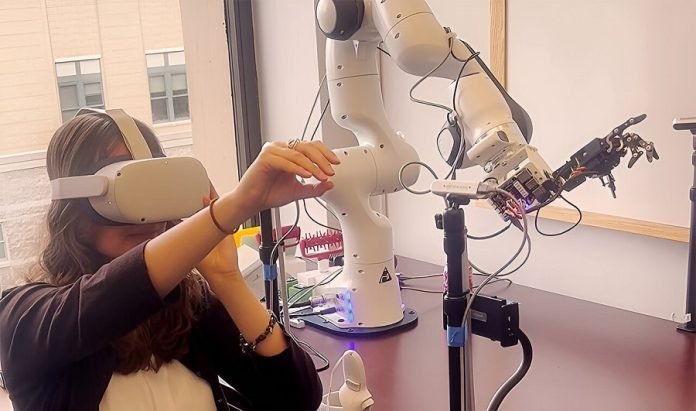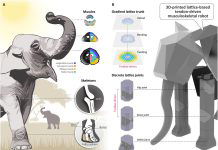
Imagine trying to teach a toddler how to pick up a toy. You show them once or twice, and they get it, right?
Now, scientists at Carnegie Mellon University (CMU) are trying to do something similar, but with robots!
They’re using special technology to make robots watch and learn from human actions, almost like how we learn from watching others.
Have you ever played with virtual reality (VR) headsets? They’re those fancy gadgets that make you feel like you’re inside a video game.
Well, two really smart students, Alison Bartch and Abraham George, are using VR to teach robots.
With their professor, Amir Barati Farimani, they created a simple game where a person picks up a block in the virtual world. When the robot watches this, it learns how to do the same thing in the real world!
Abraham explained it simply. He said, “When I show you how to do something, you can quickly copy me.
Now, our robot can do the same. It watches us do a task in the virtual world and then tries it out for itself.”
Here’s the cool part: normally, teaching robots to do stuff takes a lot of time. But Alison and Abraham found a shortcut.
By making the robot watch these “human-like” movements in the VR world, it learns way faster! In fact, with just a tiny bit of watching and learning (less than a minute!), the robot can pick up new skills. That’s super quick!
However, there’s a challenge. Abraham said it’s like trying to teach a computer to know what a dog looks like, but only showing it one picture.
If the computer then sees a different kind of dog, it might get confused. So, they’re trying to make sure the robot learns well from just a few examples and can understand different ways of doing the same thing.
But that’s not all. Alison has big dreams for the future. She wants to use this method to teach robots to work with stuff that can change shape easily, like clay. Imagine if a robot could help an artist shape a clay pot or help in the kitchen kneading dough!
Alison said, “If we want robots to help us in our homes, they need to know how different things feel and behave. Think about all the squishy and stretchy things we use daily, like food or clothes. Robots should handle them without squashing or tearing them.”
In short, this amazing team at CMU is teaching robots to learn fast, just like us. They’re using fancy technology and some smart tricks to make robots better helpers.
And the best part? They’ve shared all their discoveries at a big robot conference in 2023.
Who knows? In the future, we might have robot buddies that learn new tasks just by watching us, ready to help around the house or even in art studios!
Follow us on Twitter for more articles about this topic.
Source: Carnegie Mellon University.



